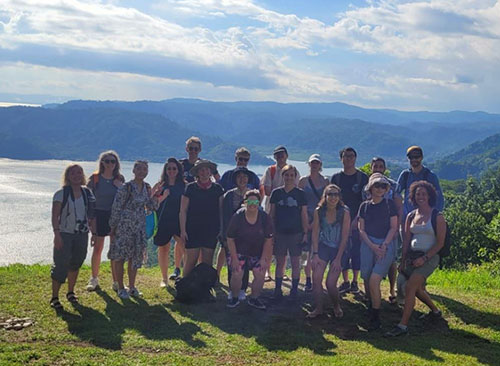University of Bristol experts to investigate Titanic depths on submarine as part of a Galapagos science mission
A team of researchers will voyage more than a mile beneath the Pacific Ocean in submersible The Alvin, famous for diving to the wreck of RMS Titanic in 1986.
The exercise is part of a four-week expedition of the Galapagos islands to monitor sea corals, lavas and the spectacular marine life surrounding them.
They will travel aboard oceanic research ship, the R/V Atlantis as they try to piece together how the archipelago was formed, by further understanding the chemical and physical conditions of the oceans, both past and present.
Dr. Samuel Mitchell, a volcanologist from Bristol’s School of Earth Sciences said: “From biology to volcanology to climate science, there is such a range of expertise on board this voyage, that we’re able to explore unique cross-disciplinary questions that haven’t been looked at before.
“Do different lava flows on the seafloor control how and where corals grow? We honestly have no idea, so it’s very exciting to get the opportunity to combine these different fields. We’ll be exploring parts of the seafloor that have never been mapped, let alone imaged before, so any discovery is a new discovery!”
Principal Investigator Professor Laura Robinson, will be the team’s main onshore contact. Her focus is on deep sea coral communities, examining collected samples to look at how the climate has changed over millennia.
Professor Robinson explained: “Deep sea corals (DSC) provide an exciting archive of ocean properties.
“Our interdisciplinary team proposes to produce new, high resolution records from DSCs collected from the Galapagos to provide new data to test the mechanisms that forced the dramatic carbon dioxide increase at the end of the last glacial period.
“With the publication of new carbon dioxide data from ice cores we now know that these abrupt climate events happened even more rapidly than previously thought, making the need to produce well dated, high resolution oceanic records ever more necessary.
“Even after decades of exploration and research, there remain critical gaps in the paleoceanographic record from the Equatorial Pacific that prevent us from determining the processes that occurred in the ocean here, and, importantly, when they happened both of which are essential for placing that information within a more global context of climate change.”
Aboard the boat, the team will be led by deep-sea biologist Michelle Taylor of Essex University and volcanologist Dan Fornari from the Woods Hole Oceanographic Institution. They will each take turns squeezing into the small three-person submersible along with University of Bristol researchers and other party members which will carry them 3000m deep under the waves of the Pacific.
A total of four current PhD students and two postdoctoral researchers will accompany them on this ship. For some it is their first time at sea living and working on a research ship.
The research team will work alongside the Charles Darwin Foundation, who will liaise with the Galapagos National Park and representatives from the Ecuadorian Navy. Members from all three organisations will be onboard so the team can work with them directly to ensure managed protection and conservation of the Galapagos platform and marine ecosystems.
During the last 25,000 years the most dramatic global climate events occurred during the deglacial transition from the cold glacial period to the modern warmer climate.
Contradictory datasets have identified different sources of carbon release and changing ocean ventilation within the equatorial Pacific as important processes for global climate in the past.
Scientists hope that by unlocking these mysteries they can gain important insights into the current changing climate.

